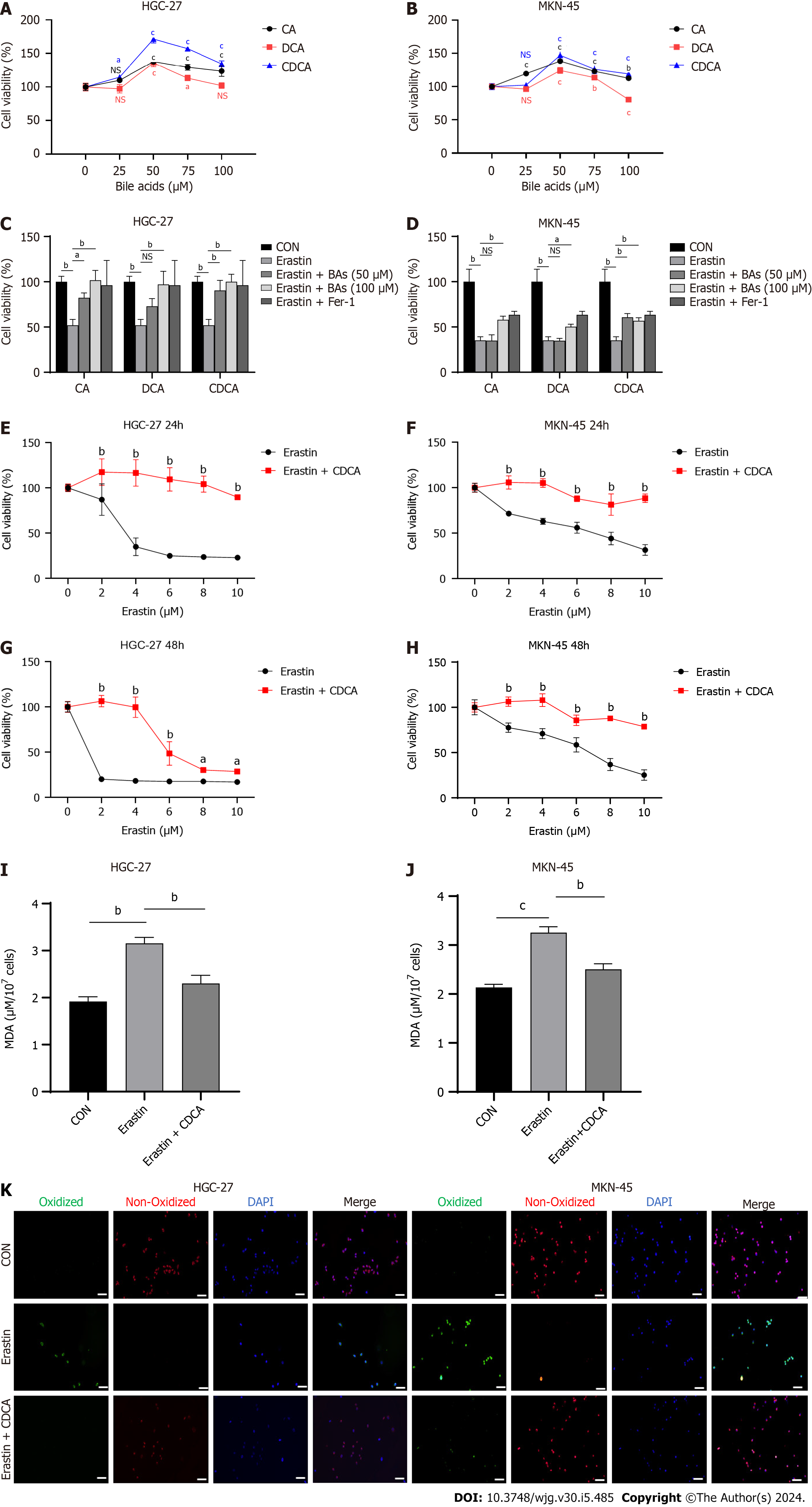Copyright
©The Author(s) 2024.
World J Gastroenterol. Feb 7, 2024; 30(5): 485-498
Published online Feb 7, 2024. doi: 10.3748/wjg.v30.i5.485
Published online Feb 7, 2024. doi: 10.3748/wjg.v30.i5.485
Figure 1 Bile acids enhanced proliferation and inhibited erastin-induced ferroptosis sensitivity in gastric cancer cells.
A and B: Cell viability assay for HGC-27 and MKN-45 cells treated with three Bas; C and D: Cell viability assay for HGC-27 and MKN-45 cells treated with different concentration of BAs together with erastin (5 μM); E-H: Cell viability assay for two gastric cancer cell lines stimulated with erastin followed by chenodeoxycholic acid (50 μM) or control for 24 and 48 h; I and J: Malondialdehyde production in HGC-27 and MKN-45 cells; K: BODIPY-589/591 C11 staining to identify lipid reactive oxygen species in the cell lines under different treatments. Scale bar: 100 μm. aP < 0.05, bP < 0.01, cP < 0.001. These experiments were repeated three times. BAs: Bile acids; CA: Cholic acid; DCA: Dehydrocholic acid; CDCA: Chenodeoxycholic acid; MDA: Malondialdehyde; NS: Not significant.
- Citation: Liu CX, Gao Y, Xu XF, Jin X, Zhang Y, Xu Q, Ding HX, Li BJ, Du FK, Li LC, Zhong MW, Zhu JK, Zhang GY. Bile acids inhibit ferroptosis sensitivity through activating farnesoid X receptor in gastric cancer cells. World J Gastroenterol 2024; 30(5): 485-498
- URL: https://www.wjgnet.com/1007-9327/full/v30/i5/485.htm
- DOI: https://dx.doi.org/10.3748/wjg.v30.i5.485









